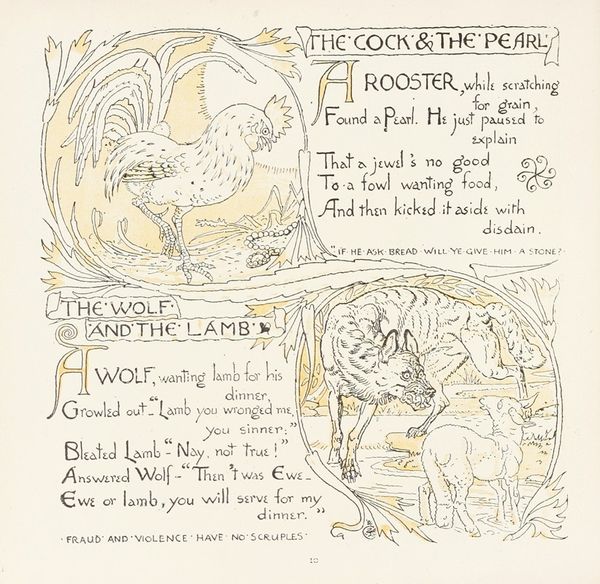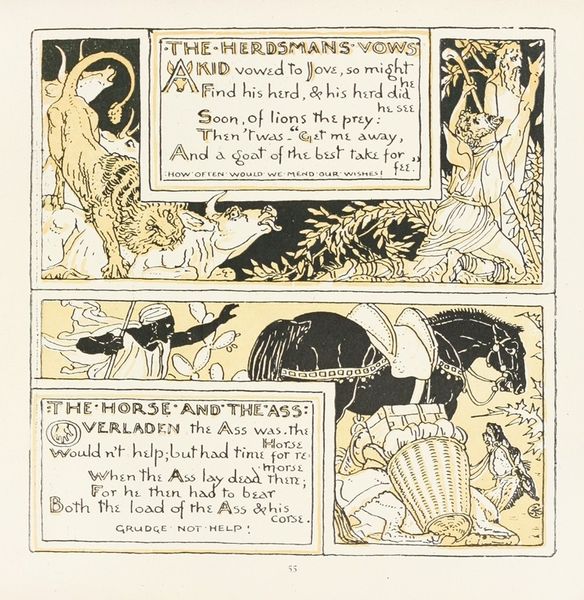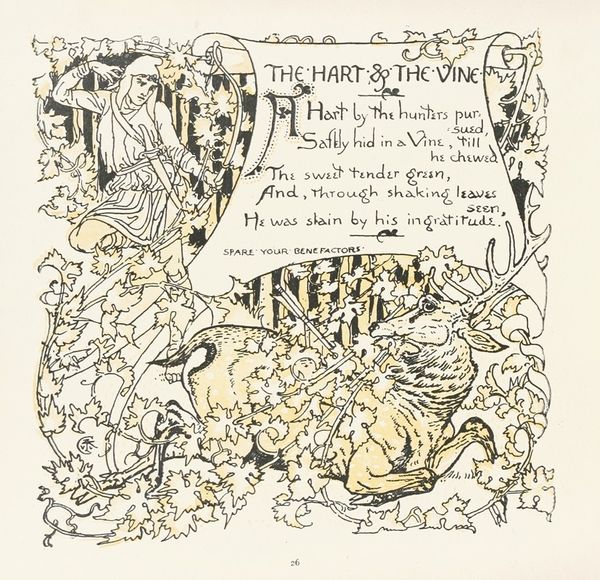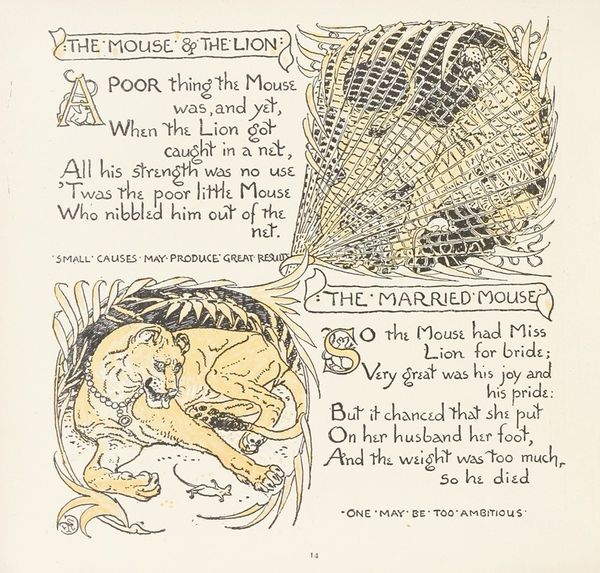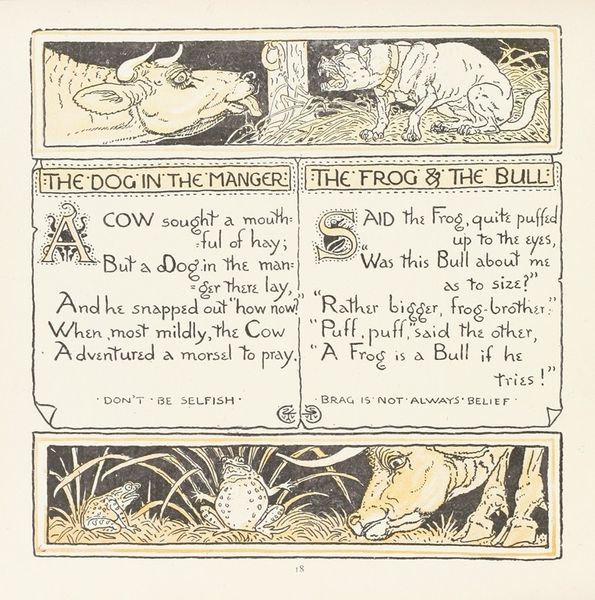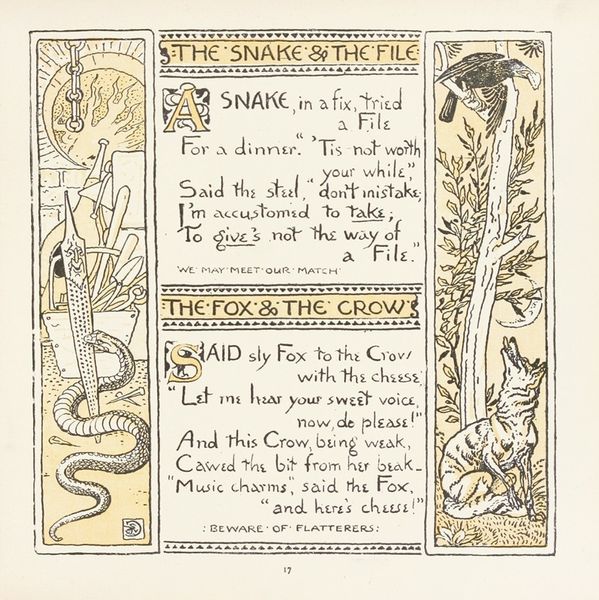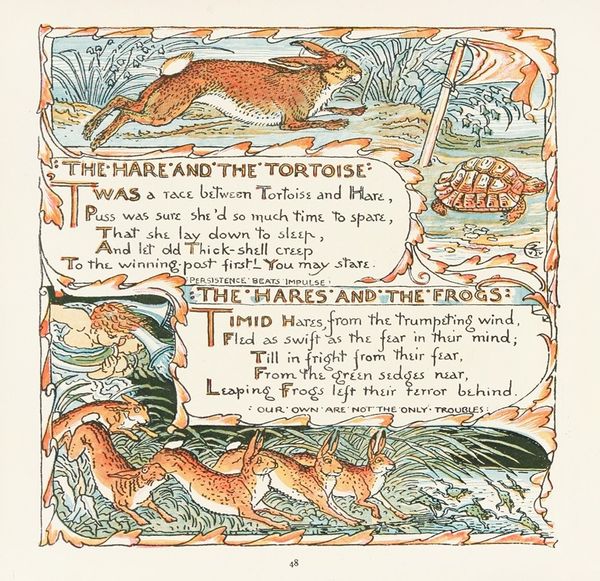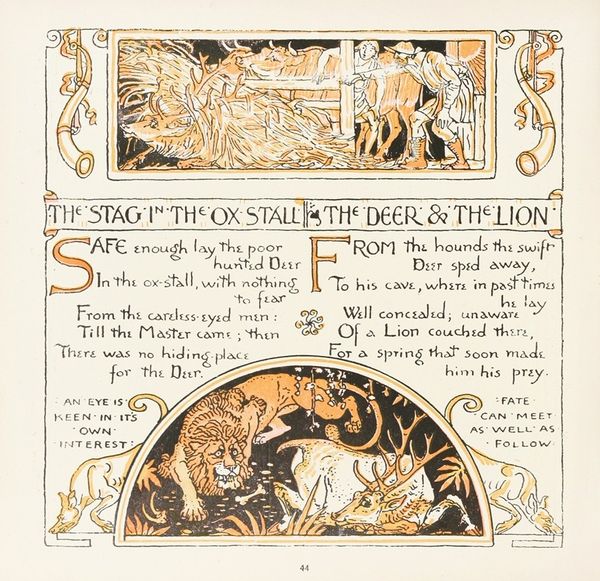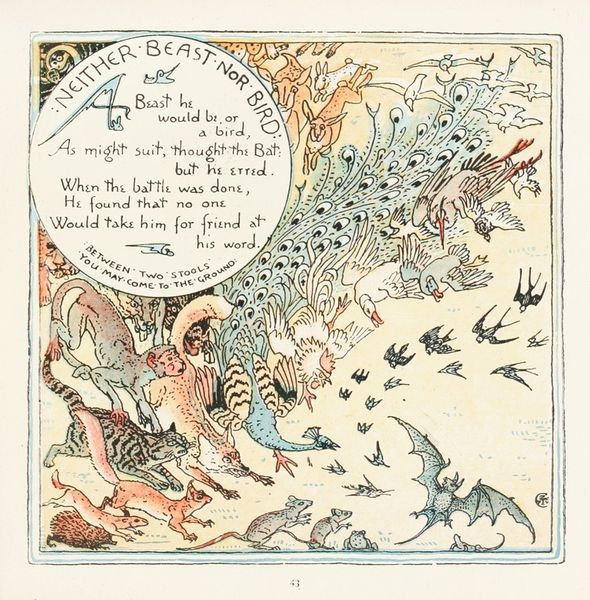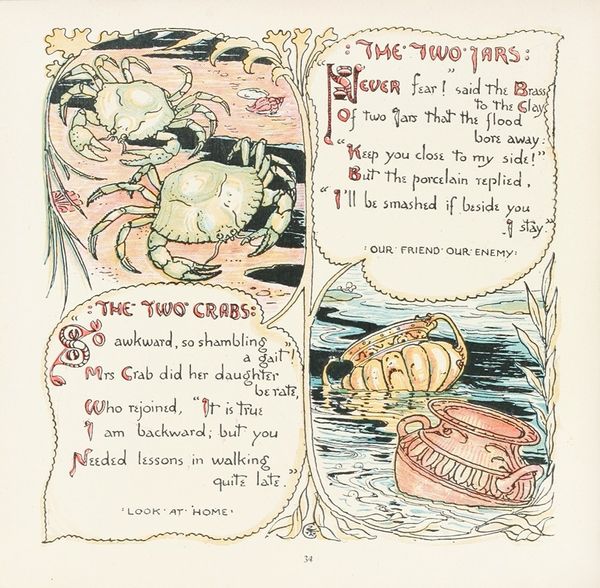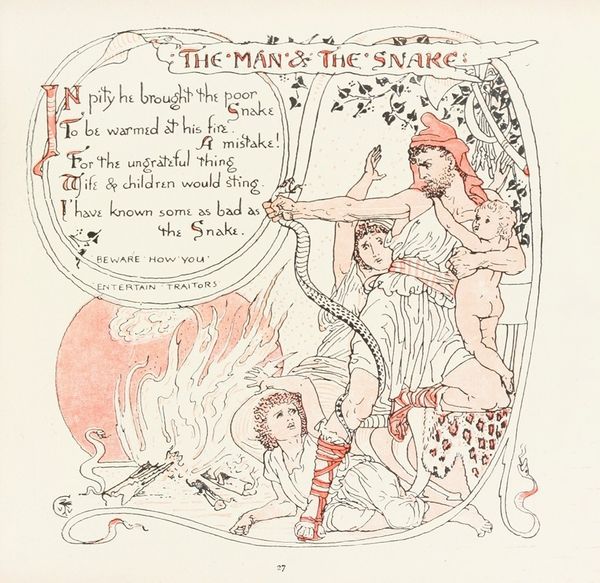
drawing, ink, pen
#
drawing
#
comic strip sketch
#
art-nouveau
#
narrative-art
#
pen drawing
#
pen illustration
#
pen sketch
#
old engraving style
#
ink line art
#
ink
#
ink drawing experimentation
#
folk-art
#
pen-ink sketch
#
pen work
#
symbolism
#
sketchbook drawing
#
pen
#
genre-painting
Copyright: Public Domain: Artvee
Curator: Today we’re looking at Walter Crane’s 1908 pen, ink, and wash drawing, "The Miser and his Gold, The Golden Eggs." What strikes you first about this work? Editor: Its illustrative nature. The contrasting stories are presented within circular vignettes, a self-contained little universe showcasing moral failings of man – and rather neatly, I might add. Curator: Yes, there's a strong illustrative quality. Notice how Crane utilizes Art Nouveau design elements. The sinuous lines, particularly in the borders and the stylized figures, contribute to a flattened perspective, typical of the movement. Editor: Absolutely. Crane, known for his children's book illustrations, brings that aesthetic to bear here, albeit with a sharper critical edge. The layout—two thematically-linked cautionary tales—recalls comic strip art but with a clear class critique baked in, right? One man hoards, another, perhaps less strategically, slaughters his income source. The text emphasizes the solitude and destructive potential inherent in unchecked wealth acquisition. Curator: It is a double narrative bound by a central idea of destructive avarice, quite economically presented using the limited palette of ochre, black, and white. Let’s also look at Crane’s use of line; thin, controlled, delineating form with precision. It is reminiscent of an engraved print, gives clarity to the didactic message being conveyed. Editor: True, the clean lines reinforce the clarity of the morals. But it is hard to not see the heavy criticism of early capitalist impulses at play – the drawing presents these characters trapped within cycles of production and consumption, devoid of community or relational understanding, their lives measured in monetary terms alone. The style perhaps ironically elevates these cautionary tales to something timeless. Curator: Indeed. The composition's formalism – circles containing these narratives – presents them as cyclical, inescapable patterns of behavior. A closed loop, so to speak. Editor: A haunting perspective. Walter Crane gives us beautiful lines illustrating some quite harsh truths that, in a way, feel incredibly contemporary too.
Comments
No comments
Be the first to comment and join the conversation on the ultimate creative platform.
